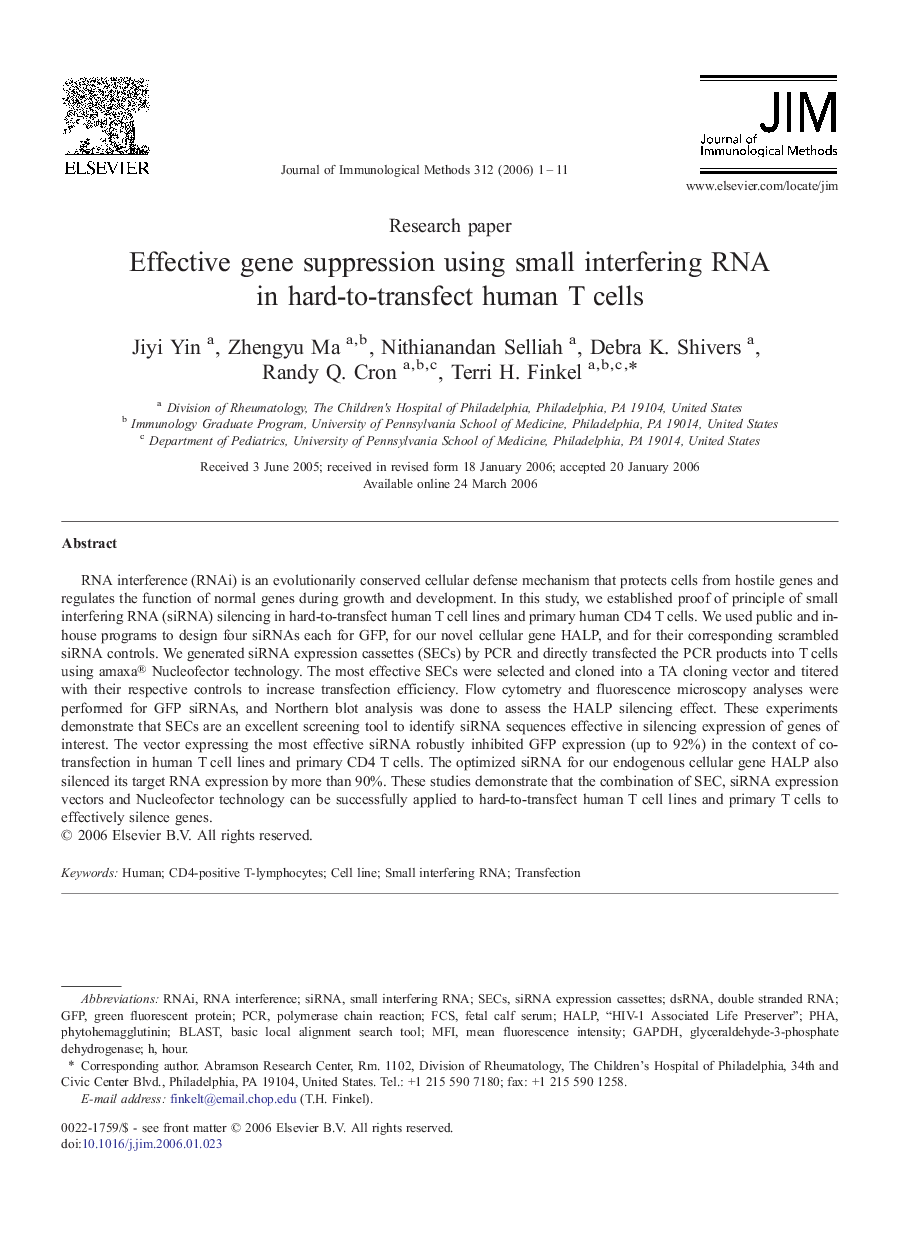| Article ID | Journal | Published Year | Pages | File Type |
|---|---|---|---|---|
| 2089574 | Journal of Immunological Methods | 2006 | 11 Pages |
RNA interference (RNAi) is an evolutionarily conserved cellular defense mechanism that protects cells from hostile genes and regulates the function of normal genes during growth and development. In this study, we established proof of principle of small interfering RNA (siRNA) silencing in hard-to-transfect human T cell lines and primary human CD4 T cells. We used public and in-house programs to design four siRNAs each for GFP, for our novel cellular gene HALP, and for their corresponding scrambled siRNA controls. We generated siRNA expression cassettes (SECs) by PCR and directly transfected the PCR products into T cells using amaxa® Nucleofector technology. The most effective SECs were selected and cloned into a TA cloning vector and titered with their respective controls to increase transfection efficiency. Flow cytometry and fluorescence microscopy analyses were performed for GFP siRNAs, and Northern blot analysis was done to assess the HALP silencing effect. These experiments demonstrate that SECs are an excellent screening tool to identify siRNA sequences effective in silencing expression of genes of interest. The vector expressing the most effective siRNA robustly inhibited GFP expression (up to 92%) in the context of co-transfection in human T cell lines and primary CD4 T cells. The optimized siRNA for our endogenous cellular gene HALP also silenced its target RNA expression by more than 90%. These studies demonstrate that the combination of SEC, siRNA expression vectors and Nucleofector technology can be successfully applied to hard-to-transfect human T cell lines and primary T cells to effectively silence genes.
